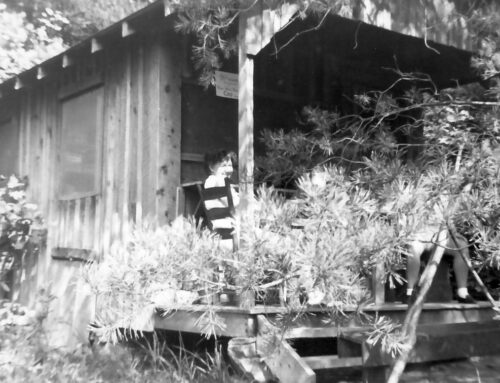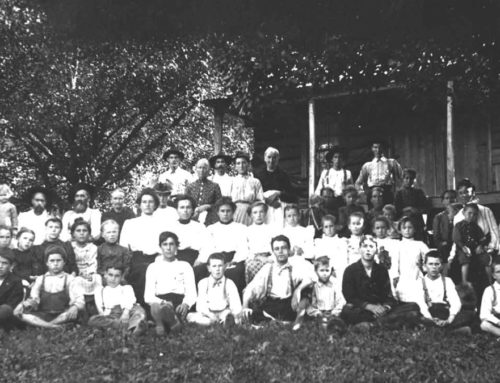If Fodderstack Could Speak: Walker Valley Lore
Written by Jeremy Lloyd, Manager of Field Programs and Collegiate Studies and author of A Home in Walker Valley: The Story of Tremont
This occasional series is named for the mountain overlooking the Walker Valley campus of Tremont Institute in Great Smoky Mountains National Park. If Fodderstack Mountain could speak, these are a few things it might reveal.
Of Serpents and People
Some settlers of European heritage in the Smoky Mountains were known to make use of the predatory habits of rat snakes and corn snakes by placing such creatures in corncribs where they helped keep down the mice population. But in general, people exhibited a deep aversion to their reptile neighbors, especially venomous ones, just as they do today.
In the book Dorie: Woman of the Mountains, the narrator reports about her father, who lived with his family near the Tremont company town and worked for the Little River Lumber Company. The narrator’s father was so spooked after finding a nest of copperheads, he killed 354 snakes in a single summer. At the end of this passage in the book, she identifies the species of the snakes: all, she says, were “copperheads and rattlers.” This of course ought to make any reader pause due to the high improbability of this claim. (More on this later.)
Camp Margaret Townsend operated in Walker Valley from 1925 to 1959, during which time the girl scouts would gig frogs. Alice Heap, director of the camp, recalled killing one rattlesnake and lots of copperheads. After killing a snake, she would bury its head separately (likely out of superstition) and made a belt out of its skin. This of course was after the establishment of the park. “I guess it wasn’t park rules,” she said, “but we did it.”
However, there are some accounts of tolerance shown toward snakes. Myrtle Cox, who taught at Little Greenbrier School from 1929-1930, shared the following memory when she spoke with Tremont co-founder (as well as former Little Greenbrier teacher) Elsie Burrell in 1972:
“One day we were in class. [The] room had more benches than it does now. And it was real full of children. And one day [a child] slipped up to me when I was in front…and he says, ‘Do you see that big snake right over that window back there?’ And there laid a great big snake. And I asked ‘em to move over quietly…until the snake went out the window over there.”
Mr. Howard Bailey taught at the school from 1924-1925. He surprised Miss Elsie when he shared with her what he would do if a snake showed up during school hours: he would take the children outside and let them look at it. This was long before conservation-minded principles had entered mainstream culture. But of course, hospitality and tolerance have their origin in the human heart and mind.
“You didn’t kill the snakes?” Miss Elsie asked him.
“No,” said Mr. Bailey. “We didn’t kill them.”
“That sounds like at Tremont doesn’t it?” she said.
Talk to many people today and every snake is a “copperhead” just as it was back then. There are of course over twenty species of snakes in Great Smoky Mountains National Park alone, only two of which are venomous. In addition to these, many others can be found in the Tremont area including black rat snake, northern water snake, milk snake, rough green snake, black racer, red-bellied, ring neck, garter snake, and earthsnake—all of them harmless and in fact beneficial. (Confusing a northern water snake for a copperhead is easy to do, and it happens quite often.)
Human fear of snakes may be in our DNA—or it may not. If “nature” plays some role, surely “nurture” does as well. Do snakes and people mix? Can they get along? Can humans learn to tolerate and live with snakes? The answer is a resounding Yes. But a lot of it depends on what you’ve been taught and how you see the world.
There’s room enough for all of us.







